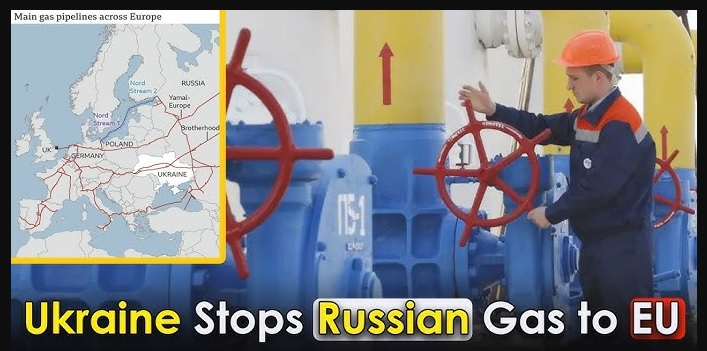
Kiev’s refusal to extend a gas transit deal with Moscow has forced the Russian company Gazprom to stop gas transit at 8:00 a.m. Moscow time (5:00 a.m. GMT) on January 1, the company said in a statement, TASS reports.
"As Ukraine repeatedly and clearly refused to extend these agreements, Gazprom was deprived of the technical and legal ability to supply gas for transit through Ukraine from January 1, 2025. The supply of Russian gas for its transportation through Ukraine stopped at 8:00 a.m. Moscow time," the statement reads.
The company pointed out that its five-year gas transit agreements with Ukraine’s Naftogaz on cooperation between the operators of the Russian and Ukrainian gas transportation systems had expired on January 1.
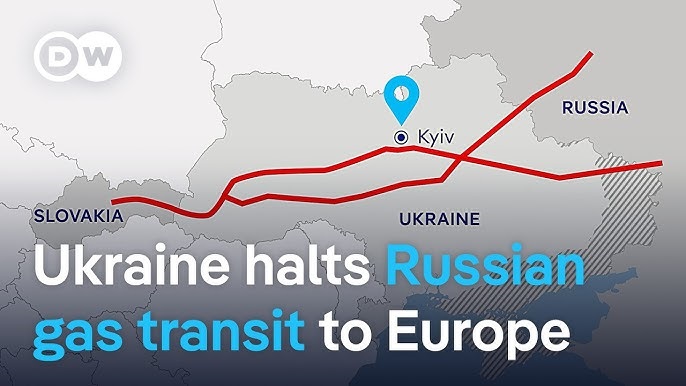
Russian gas has stopped flowing to EU states via Ukraine after a five-year deal expired, marking the end of a decades-long arrangement, BBC reports.
Ukrainian Zelensky said that his country would not allow Russia to "earn additional billions on our blood". Poland's government meanwhile said the cut-off was "another victory" against Moscow.
The European Commission said the EU had prepared for the change and most states could cope. Moldova, which is not in the EU, is already suffering shortages.
Russia can still send gas to Hungary, Turkey and Serbia through the TurkStream pipeline across the Black Sea.
Russian company Gazprom confirmed that gas exports via Ukraine to Europe stopped from 08:00 local time (05:00 GMT) on Wednesday.
Moscow has transported gas to Europe through Ukraine since 1991.
While immediate effects are light, the strategic and symbolic impact for the whole of Europe is enormous.
Russia has lost an important market, but its president, Vladimir Putin, says EU countries will suffer most.
The EU has significantly reduced imports of gas from Russia since 2022, but a number of eastern member states still depend largely on the supplies, making Russia about €5bn ($5.2bn; £4.2bn) a year.
Russian gas was less than 10% of the EU's gas imports in 2023, according to the bloc, external. That figure was 40% in 2021.
But several EU members, including Slovakia and Austria, continued to import significant amounts of gas from Russia.
Austria's energy regulator said that it did not forecast any disruption as it had diversified sources and built up reserves.
But the end of the transit deal has already caused serious tensions with Slovakia, which is now the main entry point of Russian gas into the EU and earned transit fees from piping the gas on to Austria, Hungary and Italy.
Slovakia has said it will pay more for alternative routes. Its energy regulator announced in early December that Gas prices for consumers would rise in 2025.
Robert Fico, Slovakia's prime minister, said that the end of the deal would have "drastic" consequences for EU countries, but not on Russia, Reuters reported.
Fico – who had just made a surprise visit to Moscow for talks with Putin – threatened to stop supplying electricity to Ukraine.
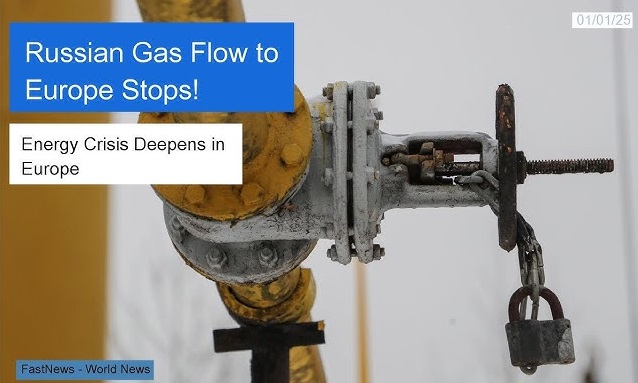
Comment by Foreign Ministry Spokeswoman Maria Zakharova on Ukraine ending Russian gas transit:
“Kiev has refused to extend the agreements between Russia’s Gazprom and Ukraine’s Naftogaz and Gas Transmission System Operator of Ukraine, which expired on January 1, 2025. On the same day, the transit of Russian gas to Europe through the territory of Ukraine was stopped. Just to emphasise, the Ukrainian authorities chose to halt Russian gas supplies to European residents despite Gazprom fulfilling its contractual obligations.
This move to cease the supply of competitive and environmentally friendly Russian source of energy both diminishes Europe’s economic potential and severely affects the quality of life for European citizens. The geopolitical context behind the Kiev regime’s decision is obvious, with the United States being the primary beneficiary of the redistribution of the energy market in Europe as well as the core sponsor of the Ukrainian crisis. The major European economy, Germany, has already become the first one to fall victim of its predatory strategy: it was forced to purchase natural gas at significantly higher prices following explosions of the Nord Stream 1 and Nord Stream 2 pipelines. Germany also had to start shutting down a number of its major legendary production facilities. Now other nations that were once part of the economically thriving and independent European Union will also bear the consequences of the US sponsorship.
The responsibility for halting Russian gas supplies lies entirely with the United States, the puppet Kiev regime, and the authorities of European states that chose financial support for the American economy over well-being of their citizens.”
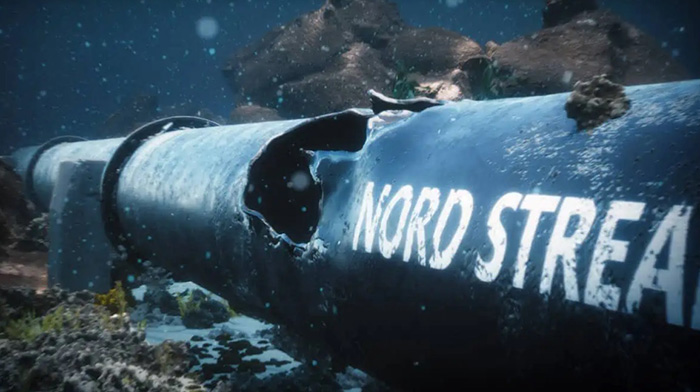
Ukraine had warned that it would not renew the five-year transit deal amid the ongoing military conflict with Russia. “We stopped the transit of Russian gas. This is a historic event. Russia is losing its markets, it will suffer financial losses. Europe has already made the decision to abandon Russian gas,” Ukraine’s Energy Minister German Galushchenko said in a statement, ‘Al Jazeera’ quotes.
Russia’s energy giant Gazprom said gas exports to Europe had been halted from 8am Moscow time (05:00 GMT) as the transit deal had expired.
“Due to the repeated and clearly expressed refusal of the Ukrainian side to renew these agreements, Gazprom was deprived of the technical and legal ability to supply gas for transit through the territory of Ukraine from January 1, 2025,” Gazprom said in a statement on the Telegram messaging app.
As of December 1 the EU received less than 14 billion cubic metres (bcm) of gas from Russia via Ukraine, down from 65 bcm/year when the latest five-year contract began in 2020. The European Commission has said that volume can be fully replaced by liquefied natural gas and non-Russian pipeline imports.
Russia still exports gas via the TurkStream pipeline on the bed of the Black Sea.
Hungary – which like Slovakia has remained friendly to Moscow – receives most of its Russian gas imports via the Black Sea pipeline. As a result, Budapest will remain largely unaffected by Ukraine’s decision.
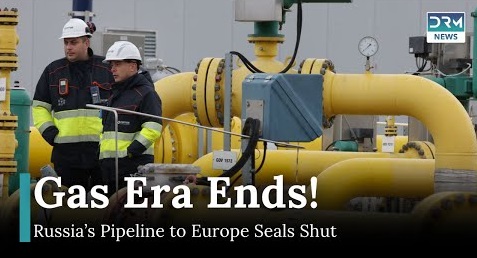
At its peak, Russia supplied nearly 40 percent of imported gas consumed in Europe, notes ‘The New York Times’.
The pipeline through Ukraine, built in the Soviet era to carry Siberian gas to European markets, is Russia’s last major gas corridor to Europe following the 2022 sabotage of the Nord Stream pipeline to Germany, possibly by Ukraine, and the closure of a route through Belarus to Poland.
While the move could substantially reduce Russia’s revenue from gas sales, it also carries risks for Ukraine. Military analysts said that Moscow could choose to bomb Ukraine’s vast network of pipelines, which it has largely spared from attack over the past three years, now that it has little incentive to leave them unharmed.
Stopping the flow of Russian gas through Ukraine is part of a broader battle being waged over global energy supplies as Kyiv and its allies seek ways to cut into the oil and gas profits at the heart of the Russian economy.
Russia spent more than half a century expanding its share of the European market, and the main conduit was the Soviet-era Urengoy-Pomary-Uzhgorod pipeline from Siberia to Ukraine’s border with Slovakia. It brings the Siberian gas via the town of Sudzha — which is now under control of Ukrainian military forces — in Russia’s Kursk region.

The European Commission said the EU had prepared for the cut-off. "The European gas infrastructure is flexible enough to provide gas of non-Russian origin," a spokesperson for the Commission said. "It has been reinforced with significant new LNG (liquefied natural gas) import capacities since 2022."
Russia and the former Soviet Union spent half a century building up a major share of the European gas market, which at its peak stood at around 35%. But the EU has slashed its dependence on Russian energy since the start of the war in Ukraine by buying more piped gas from Norway and LNG from Qatar and the United States.
Ukraine, which refused to extend the transit deal, said Europe had already made the decision to abandon Russian gas.
Combined pipeline routes from Russia delivered a record high 201 billion cubic metres (bcm) of gas to Europe in 2018.
The Nord Stream route across the Baltic Sea to Germany was blown up in 2022 and the Yamal-Europe pipeline via Belarus has also shut.
Russia shipped about 15 bcm of gas via Ukraine in 2023, down from 65 bcm when the last five-year contract began in 2020.
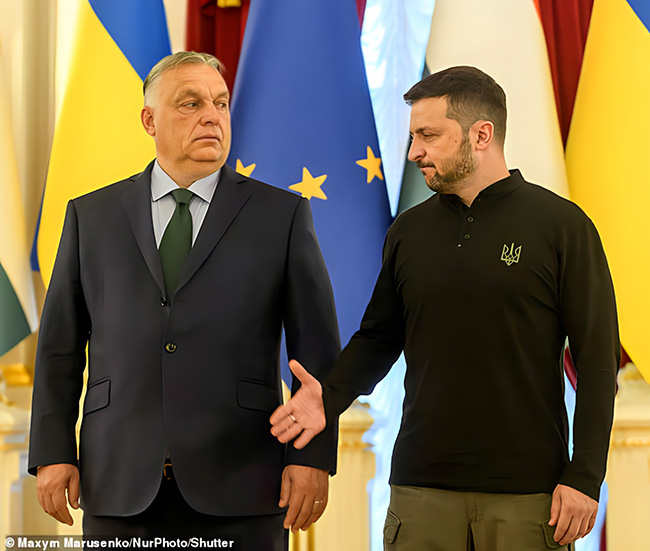 Hungarian Prime Minister Viktor Orban and Zelensky.
Hungarian Prime Minister Viktor Orban and Zelensky.
To fill the gap, Europe has imported vast quantities of liquefied natural gas (LNG) — a chilled, liquid form of natural gas that can be transported via sea tankers — from the United States and other countries, as well as pipeline gas from Norway. The EU has also ramped up imports of Russian LNG to help heat its homes and power its factories, but faces a self-imposed deadline of 2027 and plans to break its dependence on all Russian fossil fuels.
Massimo Di Odoardo, a senior natural gas researcher at energy data firm Wood Mackenzie, told CNN in late December that the deal’s expiry would make it harder for Europe to refill its stores before next winter. That’s one reason why European gas prices are likely to remain close to their current levels or perhaps rise in 2025, he said.
Prices have tumbled from all-time highs reached in summer 2022 but are still more than double their historical levels.
…The European Union provides Ukraine with constant aid, but Ukraine has ‘thanked’ Europe by cutting off Russian gas supplies.
But, if and when Europe gets bad without gas, such delivery route could used:
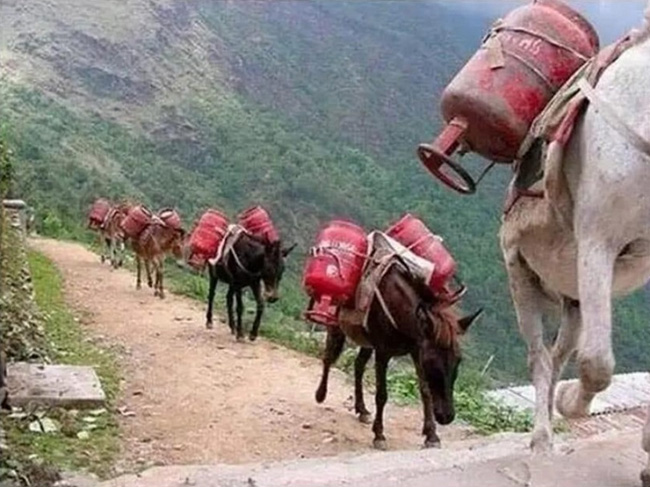
read more in our Telegram-channel https://t.me/The_International_Affairs

 11:12 03.01.2025 •
11:12 03.01.2025 •






















